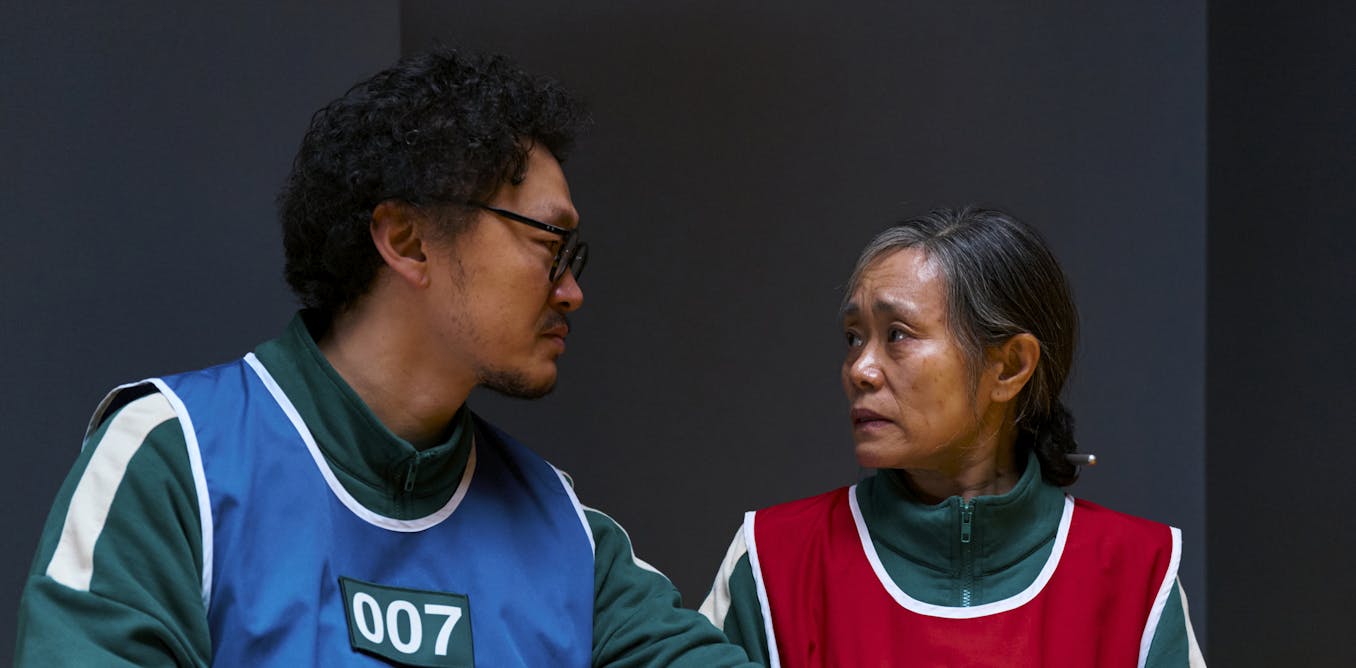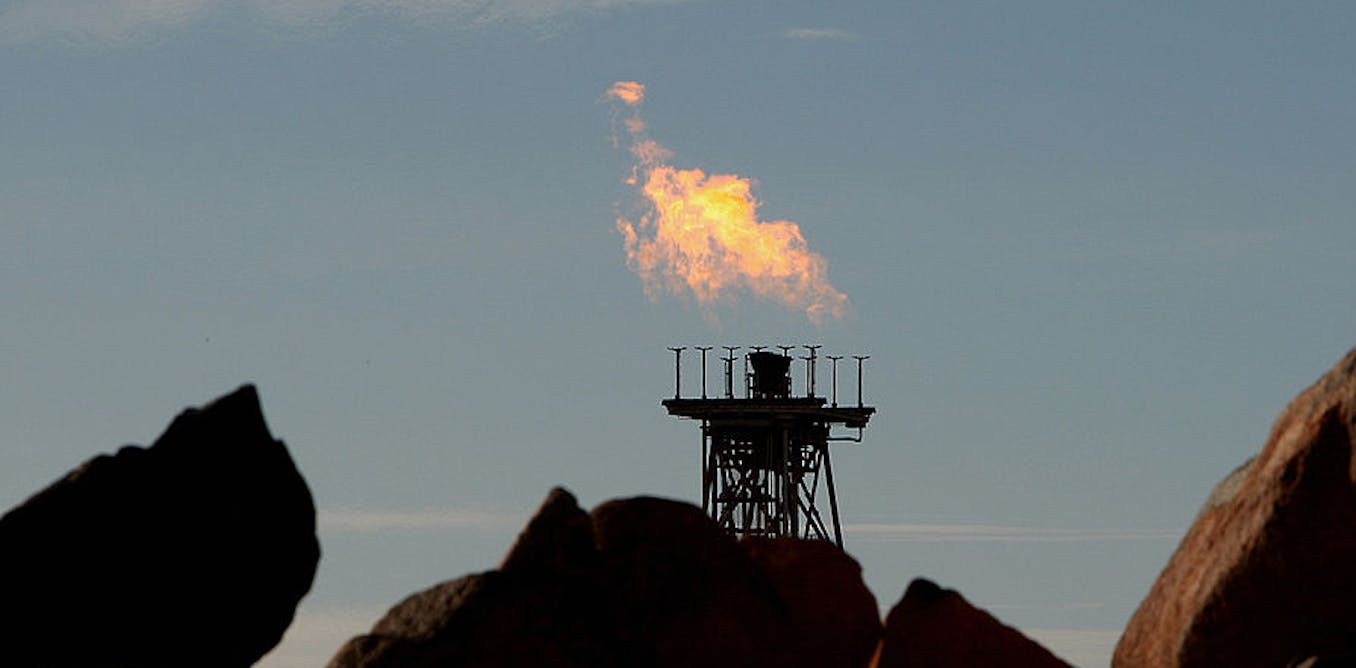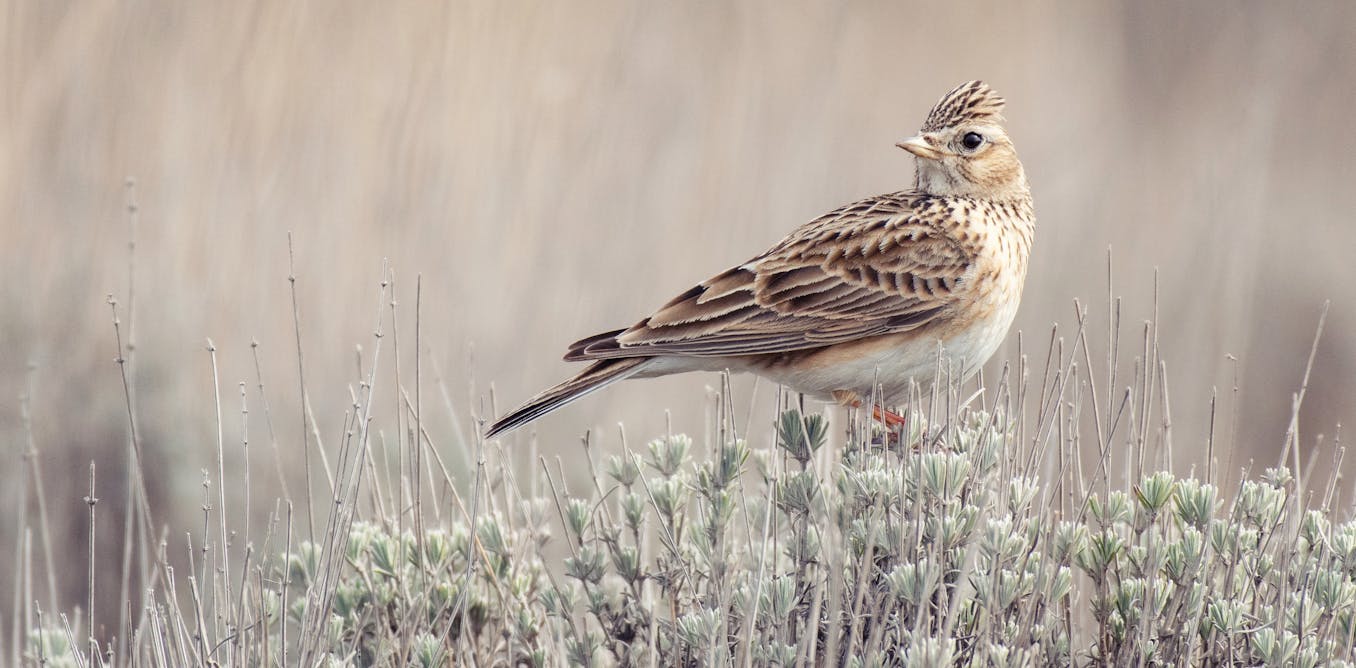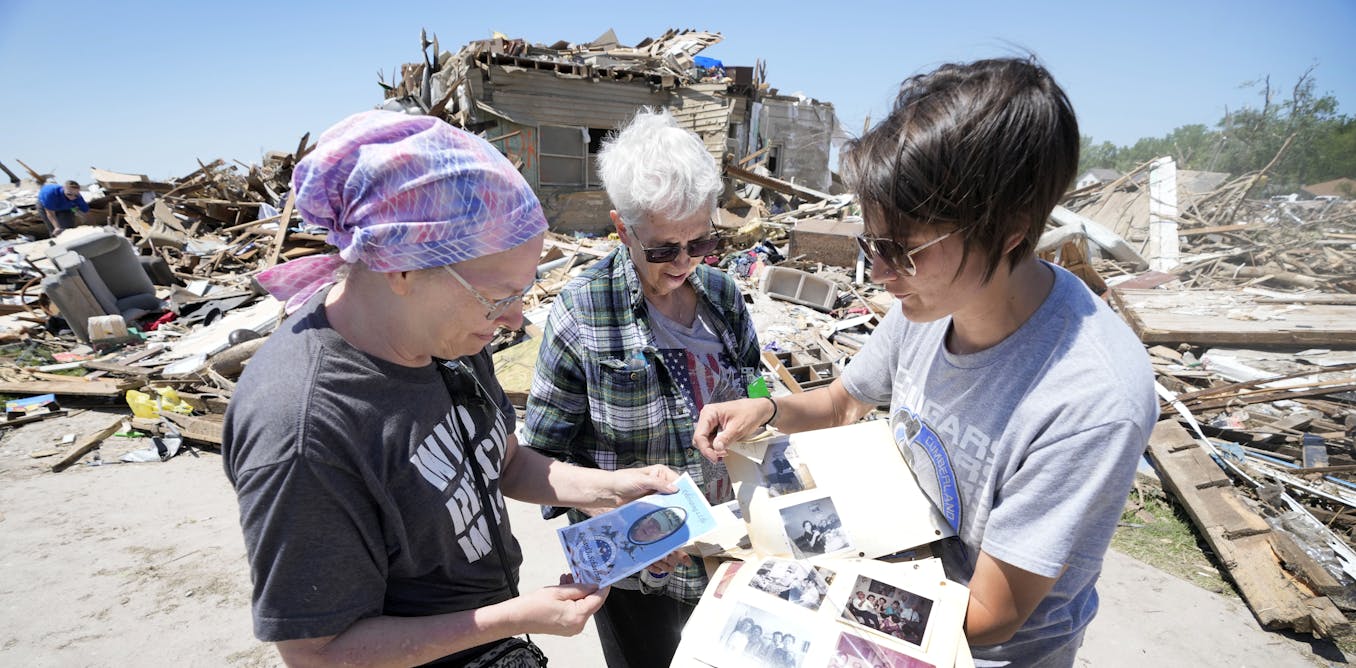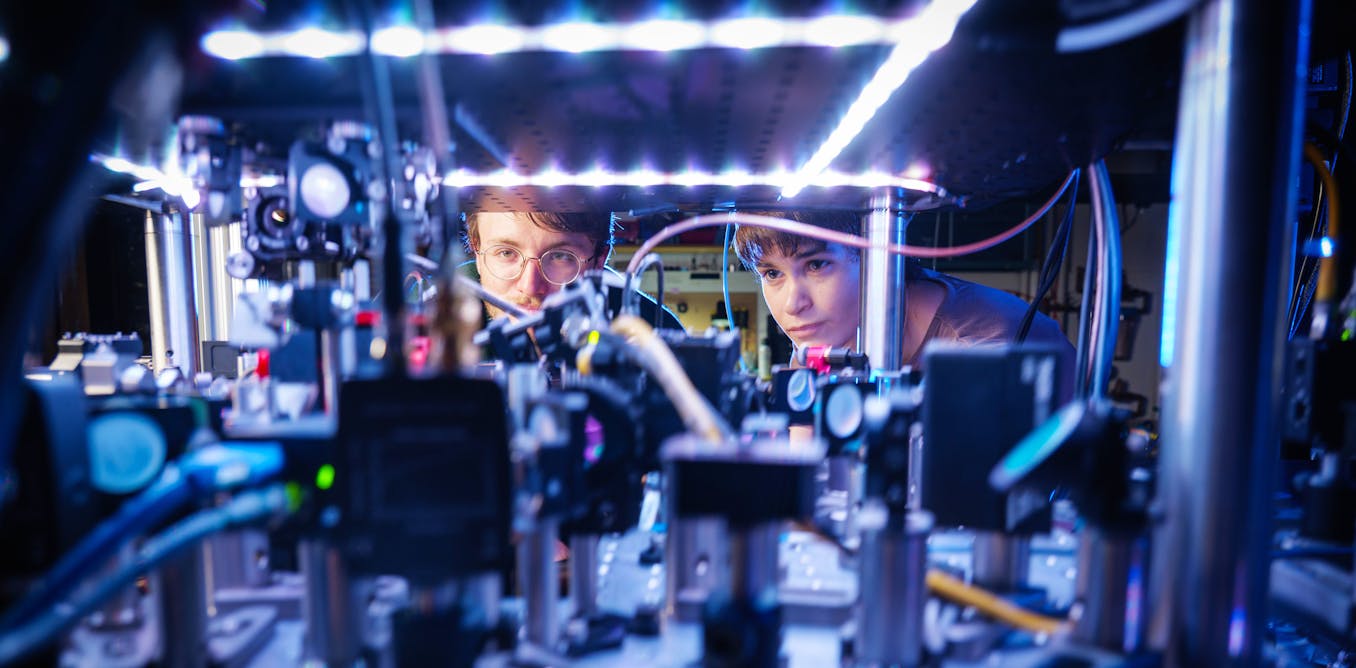Fly Like an Eagle (Full Episode) | Alaska Animal Rescue
The “Fly Like an Eagle” full episode of Alaska Animal Rescue takes viewers on an exciting journey with the team at the Alaska Raptor Center as they rescue a bald eagle stuck in a tree. With dramatic moments and heartwarming triumphs, the episode showcases the dedication and expertise of the team as they work to save the majestic bird. The episode also features the rescue of a baby muskox and the rehabilitation of a giant Pacific octopus named Pat at the Alaska SeaLife Center. Viewers will witness the care and compassion given to these wild animals as they are nursed back to health and prepared for life in their natural habitats. The episode offers a rare behind-the-scenes look at the challenges and successes of wildlife rescue and rehabilitation in Alaska. From injured eagles to orphaned muskox, the dedicated team members go above and beyond to help these animals return to the wild where they belong. The episode is a tribute to the incredible wildlife of Alaska and the humans who work tirelessly to protect and care for them.
Watch the video by Nat Geo WILD
JEN: I got a call, a very unusual call, that there was an eagle that was stuck in a tree. At the Alaska Raptor Center, we answer hundreds of phone calls for injured birds a year, but never have I had one like this. No, I don’t think it’s alive. I think it died.
Its wing is like… There’s some blood on its tail. Alaska is a great place for bald eagles. In the Lower 48, you might see one or two bald eagles at a time, but here in Alaska, you see them everywhere. And when they get into trouble, we’re here to help. AUSTIN: Towards the eagle.
JEN: Can you see it moving at all? AUSTIN: Extend if you have more extension. All right, let’s try that. (eagle shrieks) DR. VICTORIA: It’s alive, it’s alive, it’s alive! JEN: Holy crap! Wow. I can’t believe he’s alive. I thought for sure he was dead. Are you gonna go up?
DR. VICTORIA: Do you want me to go up, Craig? JEN: Dr. Victoria is the vet at the Raptor Center, and she definitely goes above and beyond. DR. VICTORIA: I started working in 1993. So, how many rescues have I done? So many, I can’t even begin to count.
But this rescue today is going to be like none I have ever done. CRAIG: It definitely went through it like a good–that much. You could see the blood and feathers all over the stick. DR. VICTORIA: So, I’m a member of the fire department, which is probably the only reason
They’re gonna let me do this. To allow a bird to just hang from a tree and die, that’s not right, if we can do something to help it. CRAIG: So, I want her locked in up on the tip before we go up. I want to see it from this angle. FIREMAN: Okay.
DR. VICTORIA: My job will be to just get the eagle. Ideally, I’ll just be grabbing it by its legs, and I’ll most likely be hanging it upside down. That’s the safest thing for me and the eagle. I’ve done this a lot, never on a big, high ladder. It will be teamwork.
What’s your name? AUSTIN: Austin. DR. VICTORIA: Okay, I’m Victoria. And then I just walk? You told me it was gonna feel weird, and it does. AUSTIN: Now put your knee down on that next rung, then another rung. DR. VICTORIA: Got it. AUSTIN: All right. CRAIG: Austin, I want you tight up against her.
Ready? AUSTIN: Yeah, I’m good. I’m clipped in. CRAIG: All right. Austin, watch the branches all the way up. AUSTIN: Got it. DR. VICTORIA: Straight ahead. I never ever thought I would be going up on a ladder on a fire truck to rescue an eagle. It just never crossed my mind. Okay, stop.
And I can see it’s not going to be easy. Okay, Austin, I’m gonna grab the eagle, there’s gonna be lots of drama, and I might fall off. ♪ ♪ ♪ ♪ SARAH: When folks come to Alaska, they really want to see those charismatic megafauna, right? (howling) All the kind of native Alaskan wildlife
That you would think of when you think of Alaska. So, you know, all of our bears, our coyotes, our foxes, our Sitka deer, our moose, they all come in injured or orphaned in some form or fashion. Muskox–a lot of visitors actually get those guys confused with bison,
But they are a completely separate species. They’re actually found above the Arctic Circle. Today we have a rare chance to add to our herd. We got a call for a baby orphaned muskox on the slope that we’re getting ready to go pick up. ♪ ♪ She’s coming from the end of the road,
As far as, driving as far north as you can possibly go in Alaska, the very tip of the state, so it’s gonna be a long day for her being in a kennel, going through a bunch of different flights before she finally gets to Anchorage. ♪ ♪ So, this little baby girl muskox,
She’s kind of been through a lot the last 24 hours. She’s been chased around by a grizzly to start, and then she was corralled by two-legged humans, and then she was captured and put in a kennel. It’s kind of like being picked up by aliens, for her. A little stressful for her.
MAN: Thank you. SARAH: Little baby. She’s a lot smaller than I thought she was gonna be. Oh, my god, she’s so cute. DIANNA: Oh, she’s adorable. SARAH: She’s– from my understanding, she’s gone a few days, almost a week without mom. It’s gonna be pretty imperative that she gets on our formula right away.
Otherwise, she’s gonna go south really fast. ♪ ♪ DIANNA: Come on in, then we’ll shut it. Ready to meet the baby! I bet you want to come out. We already love you. SARAH: Sometimes babies from the wild, they’re getting dehydrated and things like that, so we end up having to tube feed them.
I’ll give her a couple tries, and if she doesn’t take it, then I’ll have to call the vet and see what she wants us to do. ♪ ♪ DIANNA: Like, oh, yeah. First try. SARAH: Okay, that’s awesome. I didn’t think she was going to take a bottle that fast.
Little baby girl is gonna have a great life here at the Wildlife Center. Okay, take a breather. The opportunities that we can open up with our education ambassador program, as well as just increasing our herd and bringing some new genetic diversity… I’m really excited to see where this could go.
That’s a lot, baby girl. I’ve got high hopes for her. DIANNA: She’s like, “I want more.” ♪ ♪ KENNY: A lot of people come here, and they don’t know very much about the ocean. They know you can go and catch fish. There’s salmon. And the SeaLife Center’s the only public aquarium
Here in Alaska, so we do a great job of actually educating people of all the different ecosystems we have here in Alaska. So, Pat is our giant Pacific octopus. She’s the largest that we have here at the aquarium. We got Pat about three years ago.
And when we did, she was the size of a quarter, and we’ve raised her ever since. So, the octopus encounter is a chance to come behind the scenes and actually meet one of our octopus. We don’t force them to do anything, so if she wants to interact, she’ll come over.
If she doesn’t, she’s gonna do her own thing. Looks like she’s gonna interact. You guys want to reach on in… 60-plus pounds of octopus. WOMAN: I didn’t think I would be doing this. KENNY: All octopus have different personalities. Pat’s definitely very outgoing, she likes to kind of reach up and touch people,
And she’s a great animal to be interacting with. WOMAN: She likes you. She’s a little bit slimy. KENNY: They’re just very curious. They’re invertebrate, but they’re incredibly intelligent. She’s got your thumb, yeah. WOMAN: Yeah. KENNY: It’s really impressive how strong each one of their sucker disks are. These big sucker disks here
Could probably hold about 15 pounds individually. WOMAN: Good thing you’re not wearing a diamond ring. KENNY: This is a special octopus encounter today, because it’s the last encounter Pat will be used on before she’s released in the wild. Pat’s reaching a milestone in her life, and that’s the age of sexual maturity.
We’ve noticed signs of her being really active in the tank and pretty mischievous and curious, which is usually indicative of them being ready to find a mate. So, she broke one of the pump inflows in her tank. She actually cracked it, so, because of that,
We had to take her out of there and drain it and fix it. So, this is– this is what she broke off. She completely ripped it. This is the time when they always are causing mischief in their tanks. So, she’s been a great animal, but it’s definitely time to let her go
And give her the shot to reproduce in the wild. JEN: Vic, help him. DR. VICTORIA: So, I was able to get ahold of this bald eagle impaled on a branch 75 feet up in the air. I know, honey. My plan is to just slide the bird off the branch, but I can’t. Ah! JEN: Victoria has ahold of the bird, but it’s–
It looks like its wing is stuck through a branch. DR. VICTORIA: Ugh! (eagle shrieking) JEN: Yeah, you can hear him screaming. He’s probably in a lot of pain. DR. VICTORIA: Okay, hold on to me, please. Plan B is, I’m going to break the branch. Oh. Yeah, I can’t break it.
I have the eagle, but I can’t break it. JEN: Oh, it’s so sad. Oh, he’s biting her. He just bit her, I think. DR. VICTORIA: Oh, stop it! The eagle is biting me. Ah, (bleep). JEN: He just wants to bite Victoria. DR. VICTORIA: I’ll be fine. I’ve been bitten. JEN: It’s like, uh! I just want to get him down. DR. VICTORIA: Plan C, we finally get an axe brought up to us. JEN: This is insane. DR. VICTORIA: That made me a little bit worried
Just because I knew it was going to be a sudden drop. Okay. JEN: Okay. So I think they’re gonna pull it back and then lower it. DR. VICTORIA: Oh, (bleep). Ugh! Oh, my god. JEN: So, he’s not heavy, but he does have that stick through his wing, which is gonna be kind of hard to… DR. VICTORIA: I have the eagle. I’ve got him, stick and all. Now I’ve got to get him down to the ground. Fortunately, he’s a male bald eagle. Males weigh quite a bit less than females. AUSTIN: Uh, yeah, we’re clear. DR. VICTORIA: And I just wonder,
If this had been a female, would I have been able to carry this bird all the way down to the ground? I’m gonna let go here. I’m sorry, you poor baby. Well, isn’t this romantic? You get it, Jen? JEN: Oh, buddy. How in the heck, Victoria? DR. VICTORIA: Is there someone else? Mike, get over here! Mike! The first thing we need to do is get rid of this branch. We can’t even transport the bird back to the Raptor Center with this huge branch sticking out.
JEN: I know, bud. DR. VICTORIA: I’m happy we got this far, but with that branch through his wing, there’s a good chance that it’s going to be a euthanasia case. JEN: Did he bite you in the face? DR. VICTORIA: Oh, tons. JEN: I know. DR. VICTORIA: I know, you’re mad. Ow! (bleep)
You are feisty. JEN: You can bite me, you can bite me. Bite me. DR. VICTORIA: A friend of mine is able to cut through the branch and make it smaller. And that’s when we really start to realize what’s going on here. That bird had twisted itself around. I’m sorry. I’m so sorry.
JEN: Oh, god, his wing is torn up. DR. VICTORIA: I know, I know, babe. Okay. DR. VICTORIA: On three– one, two, three. Oh, man, this eagle’s so feisty. I’ll do what I can to save it. Thank you so much. That was really scary. I didn’t think about how scary it would be
When I said I wanted to go up, because I was only thinking about the eagle. And we got it. Let’s go take care of this bird. My theory is that this bird had a piece of food, most likely a piece of salmon, and was being chased by another bird. Eagles are funny.
There can be food lying everywhere, and I have seen eagles fight over one piece of food, and I’ve seen them hit power lines and run into windows because they’re not paying close attention. I’m pretty confident that’s what was going on. It was about food. Okay, what have we got here?
You’ve already bitten me 20 times. JEN: Oh, I don’t want to get bit. DR. VICTORIA: If the damage is too much, we will have to end his suffering now. JEN: Hi… DR. VICTORIA: Look at you, you go. JEN: …so ready to kill us. DR. VICTORIA: First thing he needs is a hood.
Once they can’t see, they calm down. And when they’re calm, they’re much less likely to bite us. Oh, you booger! (laughing) Shh. JEN: How bad does it look? DR. VICTORIA: Well, the patagial tendon is intact. It was lower. JEN: Oh, good. DR. VICTORIA: This is great news. The patagial tendon is so important. If this is a bird’s wing, it runs from here to here and creates this giant triangle of skin
Which allows the bird to get lift when it’s flying. JEN: If that tendon was destroyed, then it would be over right now. DR. VICTORIA: Oh, I hate to put this bird through it, but I think I’m gonna at least do a quick sutures. Honestly, when I was rescuing this bird, I was thinking,
“Oh, we’re just keeping it from a very long, slow, painful death,” but now that I’ve seen what’s actually going on, I have a little bit of hope for this bird. All the tissue looks really healthy. You know, obviously, there’s a hole through the skin, but I’m not seeing torn-up muscles or ruptured tendons.
I’m nervous that this bird isn’t gonna be able to hold its wing up. But it’s absolutely worth giving this bird a chance. It’s kind of an emotional rollercoaster. You know, you see it, you think it’s dead. “Yay, it’s alive!” “Yay, it’s not just alive, it’s alive and wanting to kill me.”
Oh, my god. Well, this is great. Oh, nuts. JEN: What? DR. VICTORIA: I found another hole. And then I see the second hole and… JEN: Is it big? DR. VICTORIA: Yeah, it’s huge. Shh, shh. I’m kind of disappointed right now. After 26 years, you’d think I’d not be disappointed, but I still am. I’m nervous about that large hole. I…I don’t think this hole will heal well enough for him to be able to fly again, but you never know, maybe he’ll surprise us. ♪ ♪
SARAH: What cracks me up about muskox is they start off so cute. Cutest baby mammals that I’ve ever cared for. And then they grow up, and they look like angry old men. Muskox were once nearly extinct from Alaska. So, they’re a really great success story. They’ve really bounced back,
And they’re doing well in the state. The ox here, they’re ambassadors for their species. We do a lot of talks and education, kind of spreading the word about muskox in Alaska. We’re really careful and cautious with our animals that we have already on site. So, quarantine’s a requirement
For any animal that comes into human care. SARAH: We picked up this new baby muskox. The staff decided we’re going to call her Athena. She kind of has a sad story. Her mom was eaten by a grizzly. We’re gonna make sure we’re following quarantine protocol. We’re gonna wear special clothing,
Make sure everybody’s healthy. AUSTIN: Because she came in from the wild, we don’t want her to potentially bring stuff and spread it to the rest of our herds. So, the pants are just something cheap that I don’t mind getting ruined, and they’re easy to throw over my work pants. SARAH: Hi, honey!
AUSTIN: Hi, kiddo. This is our first chance to do Athena’s preliminary medical check. SARAH: So cute. Save that. AUSTIN: Hi. I can try to pick her up. SARAH: Okay. AUSTIN: Alrighty? SARAH: I got to get a good view, so you got to pick her up. There’s still umbilicus on there.
So, she’s still got her umbilical cord. So, that makes me think she’s only a week. She’s so little, and clearly, we are best friends at this point. You might only be just a week old. (laughs) AUSTIN: She’s at a critical point right now just because she has been without her mom
For a couple days. We’re gonna fill in for mom, and it’s just a matter of her realizing that. She gets six feedings a day, every four hours, so we’re up at midnight and 4:00 AM making sure this little girl gets, uh, what she needs. Until, eventually, she’ll be weaned off her bottle
After about six months. Done. Good job, kid. SARAH: I’m in love with her. AUSTIN: Me, too. She is just super spunky. Because she is so young, we’re hoping for her to be an education animal where we can do things like take her on walks, she can help educate people a little bit more
About muskox out in the wild. SARAH: What’s the matter? Do you see that? AUSTIN: Uh-huh. Are you okay? Does your leg hurt? SARAH: I noticed while I was in there that baby Athena seems to have a little bit of a limp going on. I don’t know, she’s kind of got a hobble.
So, I don’t know if she’s got injured somehow while she was out there running away from the grizzly bear or what really is going on with that, so we’ll just have to keep an eye on it. AUSTIN: Good job. SARAH: She’s definitely tender. What do you think?
We’re gonna give her the best care we can and hope she does well. Yeah? ♪ ♪ KENNY: Loading up the truck. We’re getting ready to release Pat, beautiful day for it. Pat is our current giant Pacific octopus we have here at the SeaLife Center.
This is the largest species of octopus in the world, and they’re extremely plentiful here off the coast of Alaska. She was just removed about a week ago, so this may be a little more familiar than normal. Octopus, they’ll actually die after they reproduce, so they’ll usually lay their eggs,
And they’ll guard those eggs for up to a year. And then after those eggs hatch, the female will usually crawl away a few meters and die. I’ve gotten pretty attached to Pat within the last three years, but this is her one shot to reproduce in the wild.
Hopefully, she can find a mate to reproduce with, so that’s kind of the goal. JARAD: Putting her back in the wild. KENNY: Oh, yeah, this is exciting. I mean, we don’t get to do this every day, and I think Pat’s excited, too, to get out there. She knows something’s up.
She’s probably excited about it. KENNY: So, we’re taking Pat the octopus to start a new life, right near the SeaLife Center here in Resurrection Bay. Our dive plan is to take her down to around 40 feet. KENNY: We’ll find a nice, safe spot in an environment
That looks like it would be an octopus-friendly area. No predators around, good cave. This is her moment of freedom, right now. Pat has definitely sparked a lot of people’s interest, to be able to realize that they’re not big and scary and dangerous. They’re very curious,
And there’s a lot to be learned about them still. She seemed happy right away. We saw a color change in Pat, and that’s due to just her acclimating to a new environment and trying to blend in. She’s a little off the dating game, but we’ll see how she does. ♪ ♪ ♪ ♪
SARAH: Feeding time for the herd animals around here. All the ungulates, you know, they really rely on their herd to just be confident. They kind of need that comradery to make sure they don’t get a little crazy town on us. Surprisingly enough, our muskox herd is actually gonna grow by two this summer.
Baby Athena got here last week, and now we have baby Artemis. Artemis was also on the run from a grizzly bear on the slope. She loves butt scratches, though, chunk-a-monk. But it’s kind of nice that we got two of them this year, and that will help just their mental health.
They can’t be together with the whole herd until their quarantine’s over. But today will be a big day for them. It’s a big day for my staff, too. We’re going to put these two little girls together. Even though there’s only two of them, at least they have each other.
But first we actually have to clean out the pen they’re going into. We had a couple of reindeer in there. So, we need to clean that out, and then this will be their home for the summer. KIM: I went to school for eight years so that I could pick up poop.
SARAH: So, the sooner these baby guys can get on normal vegetation… AUSTIN: Look how good that is. SARAH: Grasses and sedges and stuff, you know, it’s just going to help their development in their guts. It’s time to move ’em. It’s not worth the stress to put them in a kennel
When we can just pick them up for a second and walk them over. Okay, okay. We’re going on an adventure. Oh, no. It’s okay. It’s almost over. I know. KIM: Good job, Howie. SARAH: All right. KIM: Hi, Lady. SARAH: What do you think? KIM: Aw. She’s got so much grass now.
SARAH: Artemis might be a little bit more of a handful than Athena, but I think it will all work out just fine. AUSTIN: I don’t want her to be stressed out any longer than she needs to be, so the quicker I go, the quicker she’ll get to be with her new buddy. KIM: Austin just ran for it, man. Are you ready to meet your friend? SARAH: We’ve got a little 25-pound Athena, and 40-pound Artemis,
So kind of David and Goliath-y. But Artemis kind of has a hard head, so I just hope she’s not too rough on Miss Athena, and they’ll figure it out and they’ll be friends instantly. That’s my hope. So, Artemis is super sketched out. She’s the bigger one
On the back side of Brittany over there. ♪ ♪ Arty is super, like, judgy. KIM: Check out his tiny… SARAH: Yeah. (laughing) We want to make sure she doesn’t beat up on Athena and things like that, so… They’re both following their own personal moms. KIM: Yeah.
SARAH: Artemis spent a little bit more time in the wild. She’s a little bit bigger, so she knows how to be a muskox a lot more than Athena does. There we go. Oh. (laughs) Athena caught right on and figured out, “Oh, I’m a muskox, too. You’re my friend.” ♪ ♪ ♪ ♪
I think they’re gonna be forever friends. So, Athena’s still got a little bit of a hobble. You can kind of see she’s tender on it. AUSTIN: We think she probably just sprained it. SARAH: Our vet’s gonna be here next week, so we’ll check out Athena’s leg,
And I just really hope our little girl’s okay. ♪ ♪ MAN: They can hear a sound coming from the left side or the right side. But each side… KARA: Perch. DR. VICTORIA: Saturdays, that’s our big day at the Raptor Center, where I follow up on all the birds
That have been treated throughout the week. And I am definitely invested in this bird. When you go up a 75-foot ladder to get a bird, you just can’t help but getting a little attached to it. This bird that was skewered through the wing is now called Skewer.
(Skewer screeching) DR. VICTORIA: And one more. Skewer has a hole in his wing about this size. Okay, everybody out. All of this is gonna cause drama. I don’t want a bird to suffer needlessly, and so, if Skewer tells me, you know, through the x-rays, through looking at its injuries
That it is just not a good bird for captivity, maybe it’s gonna be dragging its wing, unfortunately, I will have to euthanize it. So, I lightened it up quite a bit so I could see the soft tissue, and I’m seeing soft tissue swelling over here,
So, you know, you think about what this bird has been through. It was probably flapping and hitting its wings. It’s very lucky that it didn’t break something while it was hitting its wings against the tree. I’m looking at the bones. Things look good. So, at this point, we are very hopeful
That Skewer could be placed in a zoo or an education program. With that hole in the wing, I just don’t know if he’s going to be able to fly. HANNAH: Dr. V thinks already he’s not gonna be releasable just because of that, but he is very bitey, which is a good sign,
And it just seems like he’s got a lot of vim in him, so… PRODUCER: Oh, my god, he flew. DR. VICTORIA: We are shocked at how well Skewer’s flying with a hole this big. BRITAINY: Just a couple weeks ago, he was 75 feet up in a tree, skewered through his right wing.
We need to catch him so Dr. V can see if he’s healing okay. Look at how well he’s flying. “I have two holes in my wing, but look at me. I can fly higher than any of you guys.” How in the world is he doing that?
HANNAH: I’m just thinking of how hard it’s gonna be to catch him now that he’s flying so good. All right, here we go. DR. VICTORIA: Skewer is a fairly small bald eagle, but he has a big personality. Every little thing sets him flying, crashing into things. Hopefully his personality
Is not gonna cause problems for him. Ah, well, I guess we’ll just do this. You still got a lot of swelling here, but flying great, huh? Oh, dang it. We’ve got a little tendon exposure, which I do not like at all. Oh, no. That’s “no bueno.” He had a nice scab forming,
And I suspect when he was flying, he cracked the scab, and the scab was covering his tendon, and this tendon is vitally important for flight. If that tendon dries out, we will lose the ability for that bird to hold its wing up, and, of course, to fly.
So, I’m trying to be pretty aggressive in my treatment. I covered it to prevent moisture escape, and I did a laser treatment. This is a cold laser, and so, what it will do is increase the blood supply to the area. We’ve also put the bird in ICU
To reduce the chance of it extending its wing, which is gonna pull the scab and cause it to break again, and that would probably ruin this bird’s chances of being able to fly. We have to protect him from himself so he can heal. ♪ ♪ LISA: Here in Alaska, we are very used to finding wild animals sharing space with humans. And we respond to calls all around, from the very northern tip of Alaska to southeast. But today, we don’t have to go far. A call came in for an animal in our hometown of Seward.
We’ve been dealing with an elephant seal, right here in the harbor. This is the fourth time we have had to move this animal or that it has come up on– in a public area. First, it was in a parking lot near the condos in the harbor, then it was at Lowell Point.
Now it is choosing to be on this boat ramp that’s under construction. She’s in her annual molt cycle which looks pretty nasty, but it’s a very normal process. She does not seem bothered at all by the construction activity, but her presence definitely halts a lot of the work.
She’s looking a lot more alert today than she has in the past, for sure. It’s better for us and hopefully for her to get her to a more remote location. Go around the other side of me, Norm, just the other side of me so she’s not– yup, that side.
And then tip the cage right up under her. It’s probably a lot like somebody feeling like they have the flu. They just don’t feel well, they don’t want to eat. So, she clearly picked this ramp like our couch when we have the flu, so… Okay. Now we’re good.
Clearly, as far as we’ve gotten in the past, is not working. She just has a strong sense of returning to a comfortable spot. We’re hoping we find a spot that she enjoys just as much as the boat ramp. It takes a little bit of coaxing. She looks around, kind of assesses the scene.
We have to just tilt the cage a little bit to give a little help from gravity. Okay. Our best-case scenario is that she decides to stay put out here and doesn’t come back into Seward. BLYTHE: Hi, little lady. What are you doing? Can I see your eye?
So, one of our Sitka deer has what looks like kind of a red and inflamed tear duct. So, I’m going to get a pretty good picture of it, as close as I can. You are so rude. And send it on to our vet.
SARAH: She definitely does have a swollen right tear duct area. The vet thinks it’s a bug bite. If the swelling doesn’t go down, or if it gets worse, then I’ll let her know either tonight or tomorrow, if you notice any change. ANDREW: The first day, Arty and Athena
Were kind of skeptical of each other, but we can come in here now, and normally they lay together behind the pen, like right next to each other, so they pretty much do everything together now. They’re really close. KIM: (giggles) Athena. SARAH: But Athena’s limp is really concerning to me,
So our vet came out here, took some x-rays, so we can get to the bottom of what’s going on. KIM: Artemis, come on! SARAH: So, I’ve got these x-rays for Athena. If you had a chance and can come over to the infirmary, so we can go over ’em real quick.
SARAH: Unfortunately, we don’t have very good news to report about Athena. It’s not good news. See where the bone’s eaten away? You can see the growth plate is completely deteriorating, which is pretty indicative of a septic bone infection. As far as treatment goes, there is no options other than amputating the leg.
And having a 600-pound animal walking around on three legs just isn’t an option. DIANNA: That’s got to be super painful. It’s not fair to make her suffer. SARAH: Once we saw the x-rays, we knew it was kind of doomsday. That’s bad news. Yeah.
In the best interest of Athena and her quality of life, it’s going to be best to put an end to her suffering. KIM: Come on, Athena. It’s okay. Come here. SARAH: Since Athena was so small, we just did it right there by the infirmary. Artemis we took into the back of the pasture
So she didn’t have to be around. She didn’t have to see any of the stuff that was going on, because she’s already super protective of Athena. ♪ ♪ BLYTHE: You’re always going to get attached to the animals. You can’t properly care for animals if you don’t give your whole self to them and love them in every unconditional way, so it’s always gonna chip away at you when you lose one. It hurts the whole team.
AUSTIN: We try not to get attached right at the beginning, because that’s kind of when they’re the most vulnerable. I fail every single time. SARAH: Artemis knew within 10 minutes something was off, and she’s constantly looking for her. KIM: It’s really hard now seeing Artemis kind of by herself when she had Athena. BLYTHE: We had one awful outcome with one muskox, but… …hopefully with Artemis, we’re gonna get that amazing outcome where you see her out with everybody having a grand old time and gets to live a really nice, long life. ♪ ♪ ♪ ♪ ♪ ♪ BRITAINY: Every time a bird comes through our doors, our goal is to return them back into the wild.
But sometimes birds are deemed non-releasable due to sustaining some sort of permanent injury or impairment that prevent them from being able to actively hunt on their own in the wild. MAN: …unfortunately, was born… BRITAINY: And then that’s when they’ll become an educational ambassador, to teach people about their species instead.
DR. VICTORIA: So, we’ve been watching Skewer’s wounds heal over time, and every week we look, it doesn’t look like he’s healing that much. And then, this week, when we had a look… Shh, shh, shh. (Skewer screeching) …it was like a miracle. Boy, that looks a lot better right there.
All along here used to have a scab. We went from a giant scab to a very tiny scab. It was amazing how much healing happened underneath. A big change, it was huge progress, and that’s what made me decide to move him out into Main Flight.
Our Main Flight is the final stage of rehab for our birds, just the ultimate place for the eagles to complete their rehabilitation. KIM: Oh! DR. VICTORIA: Caring for injured bald eagles means a lot to me. But if we can teach people that these birds are amazing, and if you think they’re amazing,
You’ve got to save their habitat, then we’re actually doing something. And that’s the bigger message that’s really important to me. KARA: Okay, on three. One, two, three. JEN: I would say he’s defying the odds right now, because we’ve never had a situation like this
Where we had a bird with a huge hole in its wing. Pretty amazing that the bird can even fly. ♪ ♪ There he goes. Even with a big hole in his wing, he’s an amazing flyer. DR. VICTORIA: I want him strengthening his muscles. I want him stretching his wings
To make sure that he isn’t forming any adhesions or scar tissue that would keep him from opening his wings. And if he continues to heal beautifully, we might even be able to release him. AUSTIN: We’re about to do Arty’s weekly weigh-in. Come here, kid. She’s doing really great. She’s my little rock star,
And she’s gonna be a really good education animal. SARAH: So, even though Athena is gone, we still have Artemis, you know. She still needs all that love and care and attention. So, we still have to bottle-raise her. We still have to make sure she’s healthy and she progresses and meets her weight goals.
AUSTIN: Her stance is now wide enough to where she can not be on the scale if she wants to. Cheater. No, you were so close. SARAH: Artemis is definitely a spitfire, you know. She’s definitely been a headstrong muskox, but she looks really good. She’s gaining weight, and she looks happy,
And we’re excited to work with her for the summer. AUSTIN: 89! Arty has about six more months in quarantine before putting her in with the herd. Until then, we just need to spend as much time as we possibly can with her being someone for her to hang out with.
JEN: Okay, Sheila, we’re heading in right now. DR. VICTORIA: Today is a big day. Hopefully we are going to be releasing Skewer. First, we need to catch him in Main Flight… JEN: There’s Skewer. DR. VICTORIA: …and see if that hole in his wing has healed enough for release.
JEN: Main Flight is a big L-shaped space with a high area called the balcony. We need him to fly into the balcony so that we can let the curtain down and then catch him in a smaller area. They’re wary of us, as they should be. So we have to kind of hide.
Yeah, I can’t really hide myself where the switch is at to close the curtain. So, I thought, “Well, maybe I’ll just bring a sheet in “that kind of matches the color of the wall and hide in it.” Woo. It’s kind of a pain, but it works pretty well, I think, so…
The birds are flying in, but then flying out really fast. They’re not staying in. KARA: Wait, here comes somebody. JEN: Luxor…no, Skewer, Skewer, Skewer. Dang it. It takes a lot of patience to wait. Much like fishing. KARA: They’re coming, they’re coming. JEN: Okay, okay. We have Skewer. That’s Skewer. Right there.
You get a nice butt shot. DR. VICTORIA: I am anxious to see what the size of the hole will be. And also, if that tendon has really fully healed. All right. Drumroll. I’m a little nervous, because if it hasn’t healed, then he shouldn’t be released.
This bird is kind of a spaz, and that puts it more at risk for keeping it in human care. Uh, you wanna open it? JEN: Yes. DR. VICTORIA: Okay. JEN: Yes, I do… DR. VICTORIA: Ooh, nice blood feathers coming in… JEN: Holy crap, look at how tiny it is! DR. VICTORIA: Wow!
JEN: Are you kidding me?! DR. VICTORIA: And look how beautifully that tendon is covered. JEN: That’s so small. Look, it was this big. DR. VICTORIA: Yeah. JEN: Sweet. It looks amazing. He’s got feathers growing back, and the hole is a lot smaller than it was when we put him in there.
It’s pretty amazing. DR. VICTORIA: So, I think we’re gonna go ahead and release. It wasn’t until I actually looked at that wing that I could say, “We’re doing this. We’re doing the release.” It was pretty exciting carrying Skewer up to that final step, that release pad that we have.
Skewer is my miracle eagle. Such an epic rescue. I just kept thinking about how Skewer started in a tree, hanging upside down… and I thought he was dead. And then the rollercoaster of what he’s gonna do. And then, we’re finally able to release him. JEN: The odds were very stacked against Skewer
When we first got him. He’s just got a fight to him. He’s a bird that, you know, has this– he’s gonna make it. DR. VICTORIA: This is one bird I will never, ever forget. JEN: There’s just always more birds that need help, so… Skewer’s gone, but more birds will come along.
There will always be more. ♪ ♪ Captioned by Side Door Media Services
About Nat Geo WILD
National Geographic Wild is a place for all things animals and for animal-lovers alike. Take a journey through the animal kingdom with us and discover things you never knew before, or rediscover your favorite animals!
Video “Fly Like an Eagle (Full Episode) | Alaska Animal Rescue” was uploaded on 12/21/2020 to Youtube Channel Nat Geo WILD






